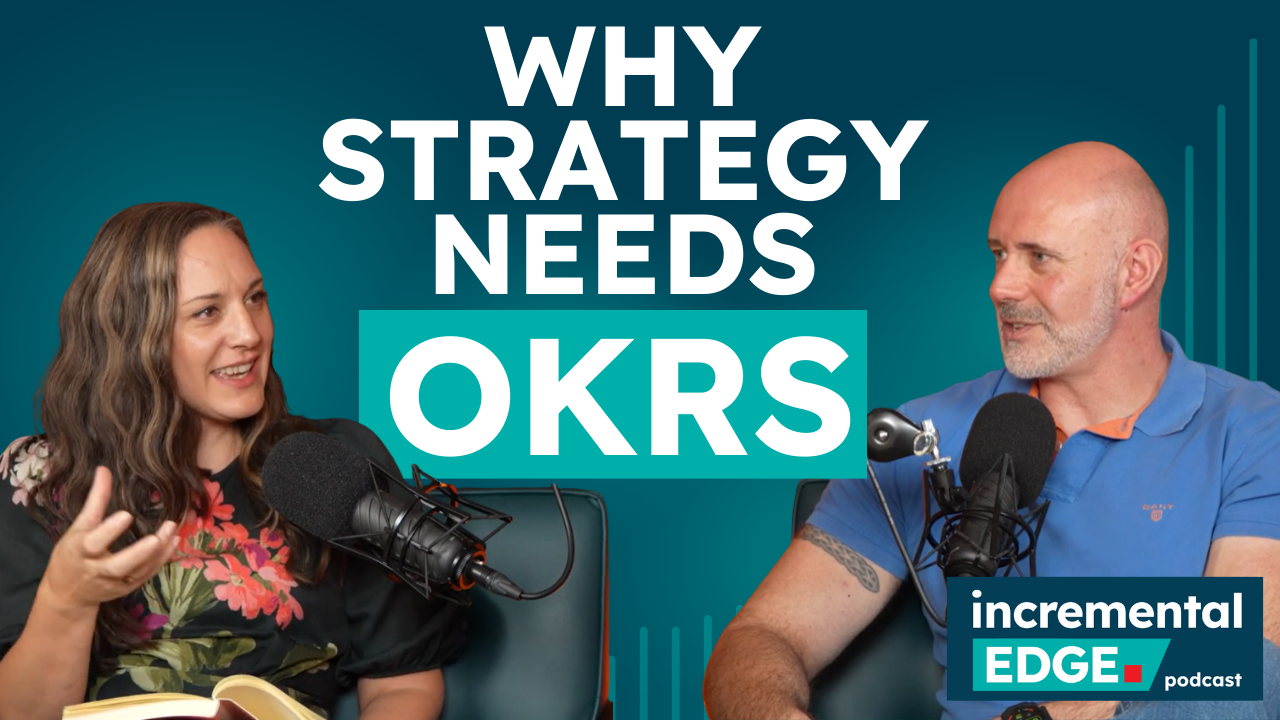
Insights
Sage Intacct vs Sage 200: Which is Right for Me?
3rd October 2024
7 min read
Author: Toby Andrews, Customer Success Manager, Datel
For over 40 years, Sage has helped organisations work smarter.
Businesses around the world rely on its portfolio of enterprise resource planning (ERP) and financial management solutions to optimise their operations – with Sage Intacct and Sage 200 two of the most popular.
With unique features catering to specific needs, you may already have an idea which one is right for you. But perhaps you need a closer look at each solution’s core capabilities and use cases before you decide? If so, then this guide’s for you.
Read on as we compare Sage Intacct vs Sage 200.
What are they?
Sage Intacct
Sage Intacct is a cloud-native financial management solution. Built-in automation streamlines your processes, saving time, improving efficiency, and reducing errors. At the same time, it consolidates data across your business to provide a single source of truth that’s accessible anywhere, any time, on any device.
Sage 200
Sage 200 is an ERP solution. From manufacturing and distribution to sales, it connects every business unit to give you complete visibility and control. With various add-ons and integrations, Sage 200 is fully customisable – adapting to support your success.
Sage Intacct vs Sage 200

Who are they for?
Sage Intacct
Extensive financial management capabilities make Sage Intacct ideal for service-based businesses that need more advanced functionality than a basic accounting package.
The flexible API lets you add, upgrade, and remove modules as your business grows. So whether you’re a rapidly scaling start-up or an established multi-entity organisation, Sage Intacct effortlessly adapts to your needs.
Sage 200
As a complete ERP solution, Sage 200 has a broad range of use cases. Sophisticated supply chain features make Sage 200 a perfect fit for product-centric businesses, such as manufacturers, distributors, and wholesalers. However, its modular design can adapt to any business or industry requirements.

Core capabilities
When it comes to Sage Intacct vs Sage 200, you’ll notice some overlap in key features and capabilities. Nonetheless, they're distinct solutions that specialise in different areas.
Sage Intacct
Sage Intacct’s core financials provides everything you need to work smarter.
Accounts payable and accounts receivable automate repetitive tasks, eliminating process inefficiencies and increasing cash flow. Dimensions let you tag operational data with custom values, making it easier to track revenue, profit margins, operating expenses, and everything between. Sage Intacct even has a configurable, AI-enhanced general ledger (GL) that lets you capture, post, and report on transactions.
Dynamic and intuitive dashboards give you easy access to real-time data, providing accurate insights to support strategic decision making. And because Sage Intacct’s a cloud-native solution, you can access it whenever and wherever.
Beyond its core capabilities, Sage Intacct has a range of optional add-ons. These include intuitive budgeting, planning, and forecasting tools that let you create and manage budgets with ease.
Sage 200
Sage 200’s core features and industry-specific modules let you manage your business in one solution.
From order processing and fulfilment to warehouse management, Sage 200 gives you greater visibility and control. Comprehensive sales management tools simplify your sales process, enabling you to optimise costs, improve service levels, and deliver better customer experiences.
Additionally, Sage 200 gives you a bird’s-eye view of financial performance across your business – helping you make more informed decisions.

Sage Intacct and Sage 200 use cases
The fastest way to understand how Sage Intacct and Sage 200 can support your business is to see how others use it.
Markerstudy Group (Sage Intacct)
Serving over one thousand broker partners and three million policyholders nationwide, the Markerstudy Group is the UK’s largest managing general agent (MGA).
Following multiple acquisitions and rapid growth, the Markerstudy Group encountered operational problems. Integrating disparate ledgers into a single, coherent system became increasingly difficult. The team decided it was time for a new financial management tool. After weighing up their options, they chose Sage Intacct.
As their Sage Intacct partner, we recommended a staggered implementation to minimise disruption. Working closely with the project team, we migrated 40 of the group’s 64 companies onto Sage Intacct in just a few short months – while laying the foundations for the remaining 24.
Moving to Sage Intacct has given the Markerstudy Group greater visibility and control over its finance data and processes. The team are delighted with Intacct’s automated reporting tools, which have contributed to a 15-day reduction in its month-end cycle.

Playdale Playgrounds (Sage 200)
Based in Ulverston, Cumbria, Playdale designs, manufacturers, and installs bespoke playground equipment for children in over 50 countries.
For years, Playdale viewed technology as a nice-to-have rather than a strategic driver of business success. This led to outdated, manual processes and siloed data. With no single source of truth, the team decided to digitalise with Sage 200.
Systemic change is always difficult. Keen to avoid disruption, Playdale brought Datel on board as its Sage 200 partner. Working together, we designed an end-to-end solution that integrates seamlessly with its current systems and processes.
Implementing Sage 200 has enabled Playdale to centralise data across its vast product portfolio. Staff can access and share information with ease, improving efficiency and helping them deliver more rewarding experiences.

Cost considerations
When thinking about Sage Intacct vs Sage 200, it’s easy to get hung up on cost. Whichever solution you choose, there are various factors that influence the cost of implementing and maintaining it. Some are universal, while others are more specific.
Sage Intacct
As a cloud-native solution, Sage Intacct follows a subscription-based pricing model. A standard license covers hosting, core functionality, and access to the software’s quarterly updates. However, it doesn’t include optional add-ons or third-party integrations.
Other cost factors are:
- Number of entities
- Number of users
- User access requirements
- Type and number of modules
- Solution design and implementation
- Strategic support
Due to the flexible nature of Sage Intacct, pricing is often bespoke. Bear this in mind when building your business case.
Sage 200
Sage 200 follows the same subscription-based pricing model as Sage Intacct. A basic license includes core software functionality for 1-3 desktop users. As with most Sage products, pricing is bespoke and depends on several factors:
- Number of users
- Number of companies
- Type and number of modules
- Solution design and implementation
- Product and strategic support
- Add-ons and third-party integrations

Implementation
It’s difficult to put an exact timescale on any Sage Intacct or Sage 200 implementation. It can take anywhere from a few weeks to several months to get your solution up and running – depending on its size and complexity.
Many businesses choose to work with specialist Sage implementation partners to streamline the process. Their expertise allows them to design and implement solutions that support your goals today and facilitate your success tomorrow.
Other benefits of working with a Sage partner include:
- Product experience and expertise
- Close working relationship with Sage
- End-to-end project management
- Ongoing support
Product experience and expertise
Working with Sage day in, day out, gives partners unique product insight. Let’s say you’re in the early stages of your Sage Intacct implementation. The right partner will talk you through the product, helping you find the perfect configuration to meet your needs.
Close working relationship with Sage
Sage partners have access to exclusive communication channels. They’re the first to hear about significant changes, get the inside scoop on upcoming releases, and can escalate your feedback directly to Sage.
End-to-end project management
Sage partners provide expert support throughout the implementation process, making your journey as smooth as possible. For example, our six-step Sage 200 implementation process provides one-to-one support, from solution design to launch, to help you hit the ground running.
Ongoing support
Your Sage journey doesn’t end at implementation. Accredited partners provide continuous support to help you get the most out of your solution. This includes everything from break/fix support to strategic guidance.

Specialist financial management or ERP?
If you’ve read to the end of this article, you should have a clear idea of which solution best meets your needs.
Sage Intacct’s financial management tools make it the obvious choice if you’re looking to streamline your accounting and budgeting processes. But if you need a fully-fledged ERP solution with powerful supply chain capabilities, we recommend Sage 200.
Still not sure which one to choose? Get in touch. With dedicated teams for Sage Intacct and Sage 200, our experts can help you explore your options, answer any questions you might have, and advise you on which solution best meets your needs.
Latest posts
.png)
9th December 2025
4 min read
Learn about the upcoming changes to FRS 102 and how to prepare
FRS 102 is getting a major update from 2026, with big implications for revenue recognition and ...

4th December 2025
4 min read
The OKR Effect: Why outcome focus improves strategic execution
Strategy is something most leaders care deeply about. We invest time building a clear plan, shaping ...

2nd December 2025
2 min read
Celebrating a double win at Sage Future 2025
We’re excited to share some fantastic news that reflects not only Datel’s hard work, but the trust, ...
